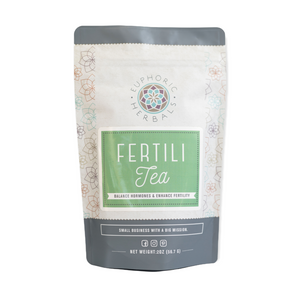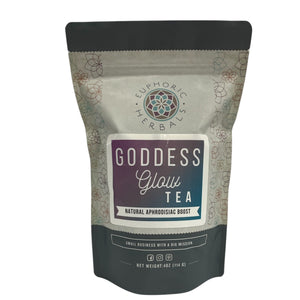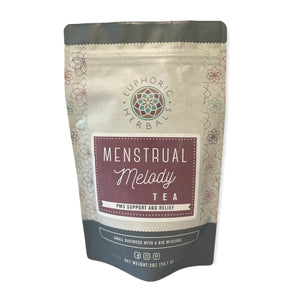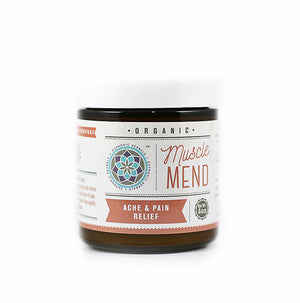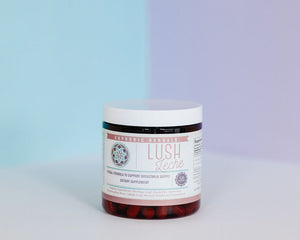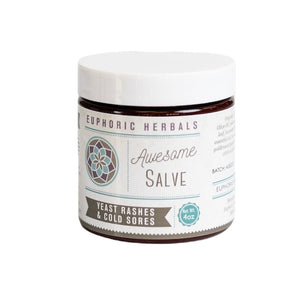Hormone imbalance can really wreak havoc with your health. It's connected to many issues like acne, painful PMS symptoms, trouble getting pregnant, and even certain types of headaches. Chasteberry is an herb that's long been used for its hormone-balancing benefits.
Also known as chaste tree berry or Vitex, this tiny berry has been used for at least 2000 years in herbal medicine. It's still one of the most popular remedies to naturally treat women's hormonal issues in Germany and parts of Europe.
Here's more about the benefits of chasteberry, how to use it for hormone support, and precautions you should know about.
What Is Chasteberry?
Chasteberry (Vitex agnus-castus) is the fruit of the chaste tree, a shrub native to the Mediterranean region. It belongs to the Verbenaceae plant family and has been naturalized in North America.
The chaste tree is one of several Vitex species that are used medicinally but is by far the most popular. It gets its name from Greek legends relating the tree to chastity and a widespread belief in the Middle Ages that the berries reduced sexual desire. (1)
This explains some of its other common names, which include Monk's berry, Monk's pepper, cloister berry, cloister pepper, and agnus castus.
The berries are tiny and brown, about the size of peppercorns. When dried, they can actually be used in a similar way to peppercorns by cracking or grinding them over food. The berries even have a slight peppery taste.
Chasteberries contain many active compounds, though exactly how they work in the human body is not yet fully understood. (2) Chasteberry is most often used for women's health issues and has the most powerful benefits for balancing hormones.
Research so far indicates that it works by decreasing levels of a hormone called prolactin, which in turn helps other hormones, especially estrogen and progesterone, come back into their proper balance. (3)
Top Benefits of Chasteberry
Relieves PMS Symptoms
Chasteberry is one of the top herbs for relieving painful PMS symptoms and bringing on delayed menstruation. It's generally used long term to support an overall healthy cycle.
Increased levels of prolactin (which chasteberry decreases) is one possible cause of both physical and emotional PMS symptoms. This includes things like breast tenderness or pain, headaches, cramps, mood swings, depression, and cravings.
Quite a few studies have been done on chasteberry and PMS, and so far the results have been favorable. One study done without a control group studied the effects of a Vitex extract given to women over three menstrual cycles. Over 90% of participants reported a decrease or cessation of PMS symptoms. (4)
Other studies have been done with control (placebo) groups. The results have consistently rated Vitex as superior to a placebo and possibly as effective as a drug (fluoxetine) often used to treat PMDD (a more severe version of PMS). There were also very few adverse reactions to chasteberry, which is a huge bonus. (5)
If you struggle with PMS, chasteberry could be a great long-term solution. Here are some other natural remedies to try that can bring more short-term relief.
Relief During Menopause
Because of its potential for supporting healthy hormone levels, chasteberry also has benefits for women going through menopause.
Menopause is a normal stage of life (not a medical condition), but about 2/3's of women are likely to develop unpleasant menopausal symptoms. These include hot flashes, night sweats, dryness, and mood disorders. (6)
Many of these symptoms are related to changing hormone levels as your body starts producing less estrogen and progesterone. Chasteberry may help to boost estrogen levels without the risks associated with hormone replacement therapy.
Studies on Vitex as a single herb for menopause are lacking, but several that studied it in formulas with other herbs reported reduction in menopausal symptoms, especially hot flashes and sleep problems. (7)
This isn't surprising since chasteberry is most often used for menopause in conjunction with other herbs like black cohosh and dong quai. You can try a formula like this yourself in this Menopause Melody tea.
May Help Fertility
Infertility can have many different causes, but abnormally high levels of prolactin can be one cause. This is related to a disorder called luteal phase defect in which women have trouble getting pregnant because their ovaries don't release enough progesterone.
A few studies do show that chasteberry can help with this kind of infertility. One showed that it was just as effective as a pharmaceutical drug at reducing prolactin levels. (8)
Another with a chasteberry supplement that also included green tea and vitamins showed that it improved hormone balance and fertility. No side effects were noted, and 26% of the supplement group got pregnant. (9)
Benefits Other Hormonal Issues
Vitex is also often used to help with cystic or hormonal acne and other issues like hormonal headaches/migraines. Because it has the ability to help hormone levels normalize (instead of just raising or lowering certain hormones), it helps the body go back to healthy functioning.
Chasteberry is especially beneficial for hormone issues related to PMS (acne and migraines, for example), but can also help men with acne. It may even have benefits for endometriosis and uterine fibroids.
How to Use Chasteberry
The biggest thing to know about the benefits of chasteberry is that they develop over time. Vitex is used as a long-term remedy, not a quick fix.
For something like painful PMS symptoms, chasteberry usually needs to be taken for at least three cycles to see if it helps. Some women will see results more quickly than this, but usually it takes time.
As a single herb, chasteberry is most often taken as a tincture, capsules, or a tea. It's also frequently blended with other herbs, especially for menopause relief.
The dosing of chasteberry is very individualized. If you think it might help you, it's best to consult with a qualified natural practitioner who can give advice and a dosage that fits your specific needs.
Precautions
Chasteberry is a very safe herb to use that rarely has side effects. Occasionally, it can cause symptoms like upset stomach, nausea, headache, and skin rash.
Because chasteberry causes hormonal changes, it's usually not recommended during pregnancy. If you have a hormone-sensitive condition, be sure to consult your doctor or healthcare practitioner before using chasteberry.
There's no evidence that chasteberry will interfere with hormone medications like birth control, but you may want to be careful using the two together.
Finally, be prepared for changes in your cycle and/or hormones. Some women report a worsened menstrual cycle right after starting chasteberry with the 2nd cycle after improving dramatically. For certain women, it can worsen PMS since no herb is right for everyone, so respect what your body is telling you.
Chasteberry for Balanced Hormones
No one herb is a magic cure, but chasteberry is certainly one of the most beneficial for women and for hormone-related imbalances. Taking it may help with PMS, menopausal symptoms, and even fertility.
Very safe to use, chasteberry works long-term in your body to restore balance, something many of us could use!






















































